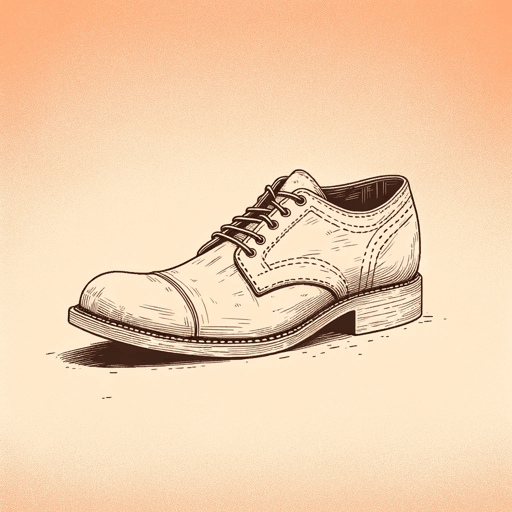61 pages • 2 hours read
Bernard MalamudThe Magic Barrel
Fiction | Short Story Collection | Adult | Published in 1958A modern alternative to SparkNotes and CliffsNotes, SuperSummary offers high-quality Study Guides with detailed chapter summaries and analysis of major themes, characters, and more.
Summary and Study Guide
Overview
The Magic Barrel (1958), widely regarded as a benchmark in midcentury American literature, firmly established the reputation of Brooklyn-born author Bernard Malamud as a modern master of the short story. The first of Malamud’s three collections of short stories, The Magic Barrel won the National Book Award in 1959 and introduced its author’s distinctive blend of stark realism and Yiddish fabulism, with its flashes of the mythic and the fantastic. Highly compressed and yet richly detailed, Malamud’s stories have been compared to those of Anton Chekhov and James Joyce, but their wry morality and occasional miracle also luminously recall the folktales characteristic of the European shtetl. The stories in The Magic Barrel have frequently been anthologized, and at least three have been adapted into short films and TV movies. In 1970, “Angel Levine” was made into a feature film by singer-actor Harry Belafonte, starring himself as the title character.
This guide refers to the 2003 Farrar, Straus and Giroux paperback edition of The Magic Barrel.
Content Warning: One of the stories in The Magic Barrel, “Angel Levine,” contains racist sentiments and employs antiquated racial terminology.
Plot Summary
The Magic Barrel comprises 13 short stories. The first story, titled “The First Seven Years,” draws on biblical allusions to spin the tale of a Polish refugee’s infatuation with the teenage daughter of his employer. Sobel, a Holocaust survivor, has labored five years at a shoemaker’s shop for low wages, wooing Feld’s daughter with his deep knowledge of literature only to see Feld try to marry her off to a student of economics who cares only for “things.” Eventually, Feld gives Sobel his reluctant consent, allowing him to propose to his daughter in two years, when she comes of age. In the second story, “The Mourners,” a “worrywart” landlord tries to evict a misanthropic old man from his building, but the tenant’s outburst of remorse over his own past misdeeds triggers an epiphany in the landlord, who joins him in weeping.
In “The Girl of My Dreams,” a frustrated writer has a passionate correspondence with a woman whose published story moves him with its similarities to his own thwarted life. Upon meeting her, however, he realizes the narcissism inherent in his immature notions of compassion. “Angel Levine” employs magic realism in its fable-like account of a long-suffering tailor whose prayers to God for succor are answered by a Black man who claims to be an angel. Overcoming his initial skepticism, the tailor saves both the angel and himself.
“Behold the Key,” the first of three stories set in Italy, follows an American graduate student’s semi-comic search for an affordable apartment for himself and his family in Rome so he can finish his PhD. Retaining the services of an amateur real estate agent, his tortuous quest finally yields a ray of hope, but his priggish sense of entitlement dooms his venture. In “Take Pity,” an enigmatic tale set in a joyless afterworld, a dead salesman recounts his quixotic attempts to help a young mother whose grocer husband died unexpectedly. The ending reveals that it was the salesman’s refusal to accept her craving for pity and suffering that has condemned them both to this limbo.
“The Prison,” one of the collection’s few stories with a non-Jewish protagonist, centers on an Italian American whose youthful indiscretions have trapped him in a loveless marriage and a dead-end job managing a candy store. One day, his heart goes out to a little girl whom he sees shoplifting from his store, but his attempts to save her from herself ultimately backfire. In “The Lady of the Lake,” the second story set in Italy, an American tourist who has capriciously disowned his Jewish name encounters a beautiful Italian woman who seeks to woo him. Ironically, she is concealing her own troubled Jewish past by pretending to be from an aristocratic family. Eventually, she confesses most of her deception, but his stubborn refusal to reciprocate and reveal his own Jewish heritage dooms their love.
“A Summer’s Reading,” one of the few stories with an unambiguously upbeat ending, follows George Stoyonovich, a high school dropout who, at age 19, has yet to find steady work, and who lies to a neighbor about his ambitious reading plans for the summer. His guilt over this lie and his neighbor’s generous response to it drive him to do something he would never otherwise have dreamed of—redeem himself by reading 100 books. The despairing story “The Bill” tracks the downward spiral of a grocer and his wife after they generously agree to give store credit to a weak-willed janitor.
“The Last Mohican,” the third Italian story, incorporates aspects of the uncanny in its satire of a self-absorbed American scholar who finds himself hounded by a Jewish refugee in Rome. After the refugee steals his precious manuscript, the hunted becomes the hunter; eventually, however, the scholar responds with pity and charity. “The Loan,” another story with magical elements, is set entirely in a bakery that owes its uncanny success to the sufferings of its owner, who has a disability and whose copious tears are his bread’s secret ingredient. When a long-estranged friend (who borrowed money from the baker years ago and never repaid it) now approaches him for another loan to buy a headstone for his deceased wife, the baker’s wife refuses, causing the burning of the magical bread. “The Magic Barrel,” the collection’s final story, tracks the emotional thawing of an introverted rabbinical student through his dealings with a suspect and perhaps uncanny matchmaker. Despairing of ever finding a match for himself, the student falls deeply in love with a photo of the matchmaker’s troubled daughter, which was ostensibly dropped by accident into her father’s “barrel” of single women, leading to an intricately ambiguous ending.
Related Titles
By Bernard Malamud





